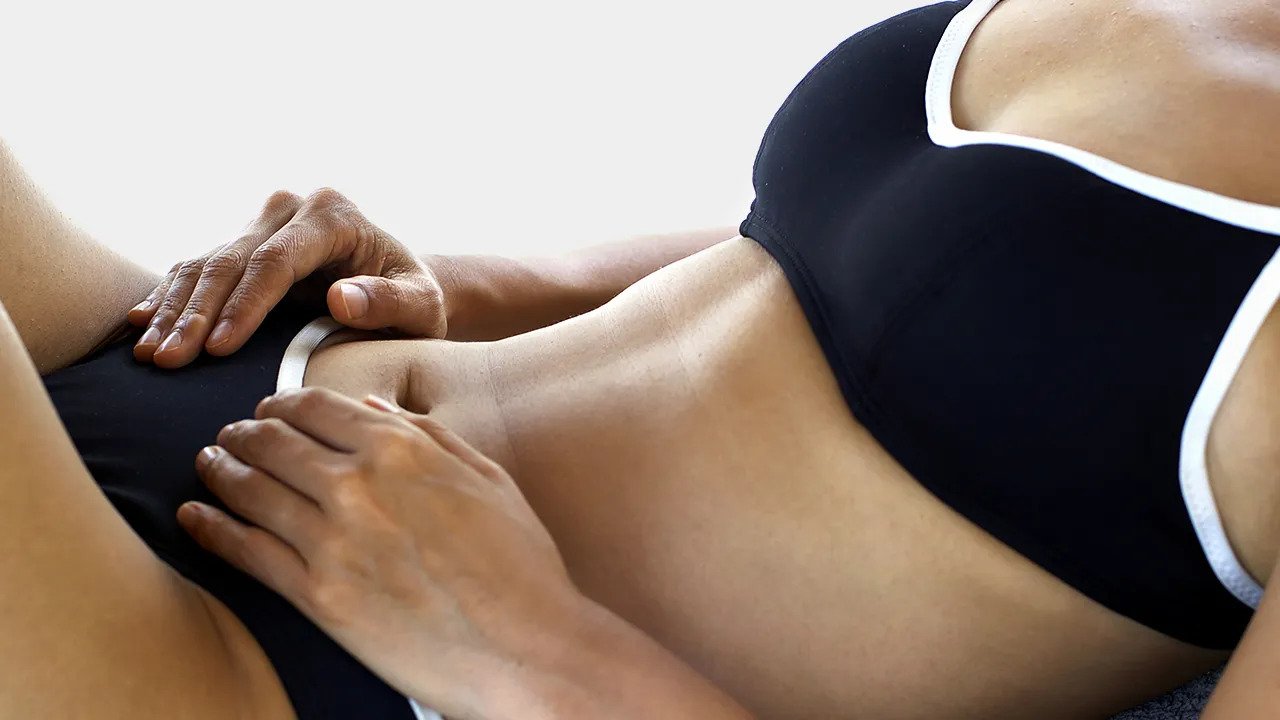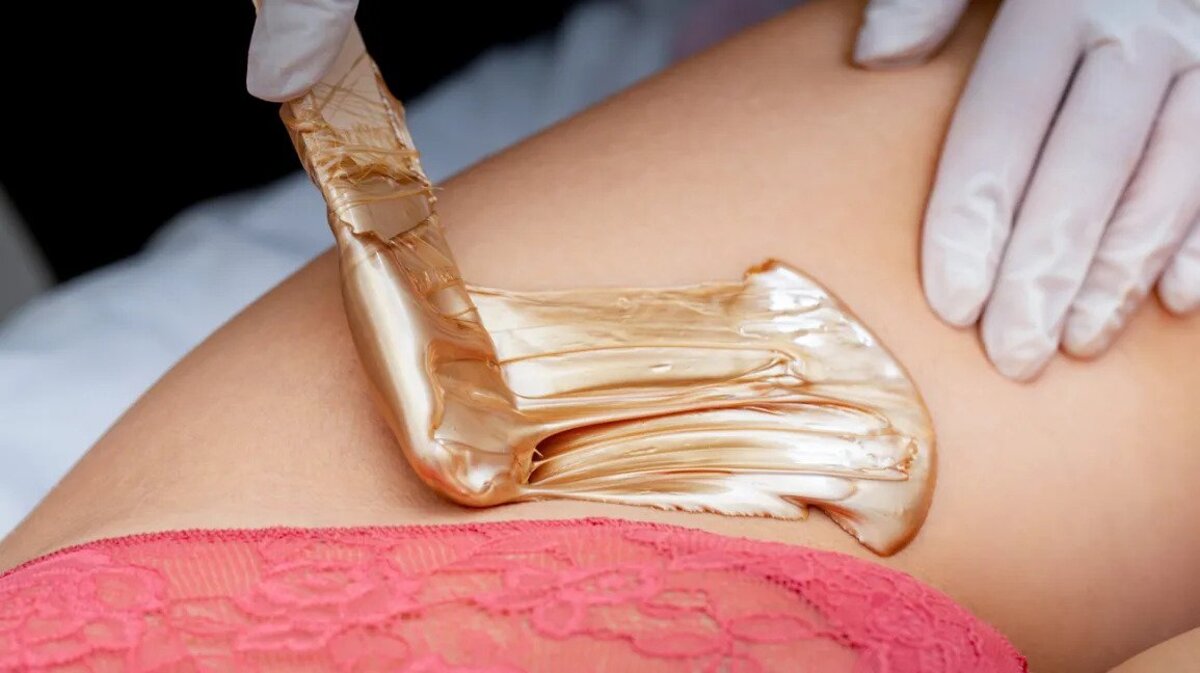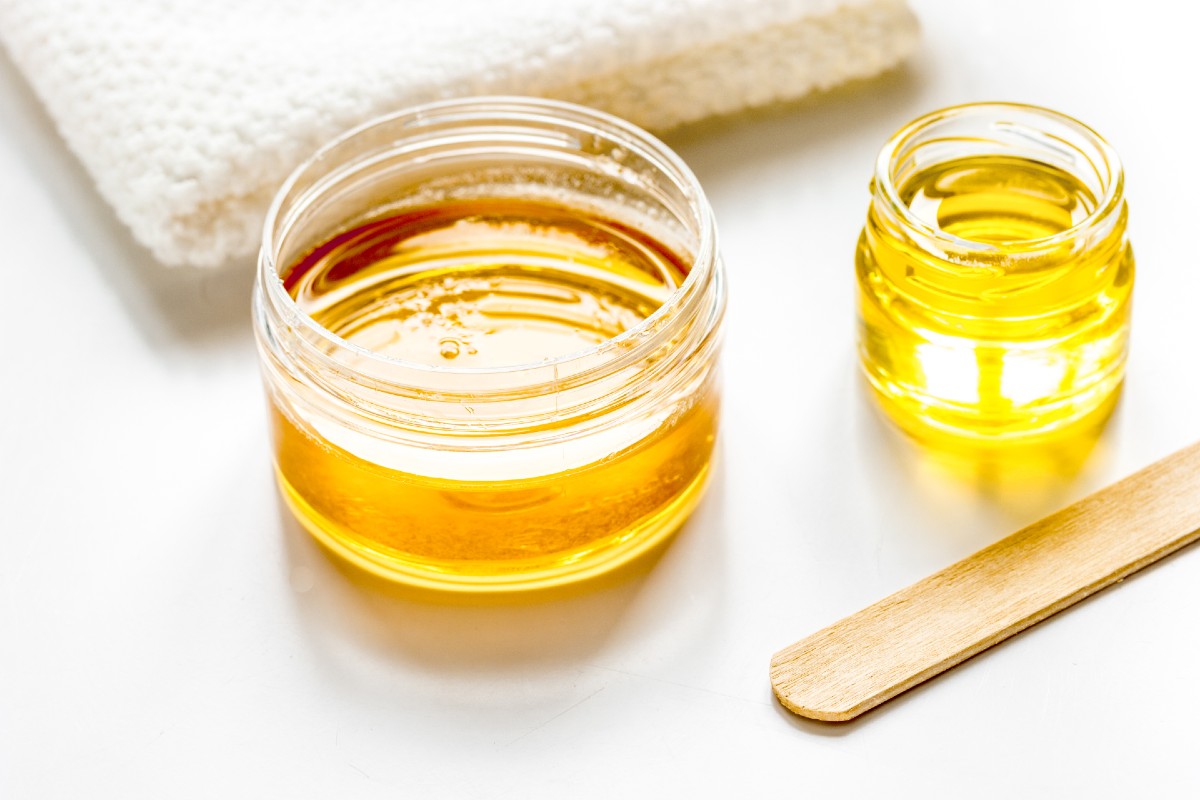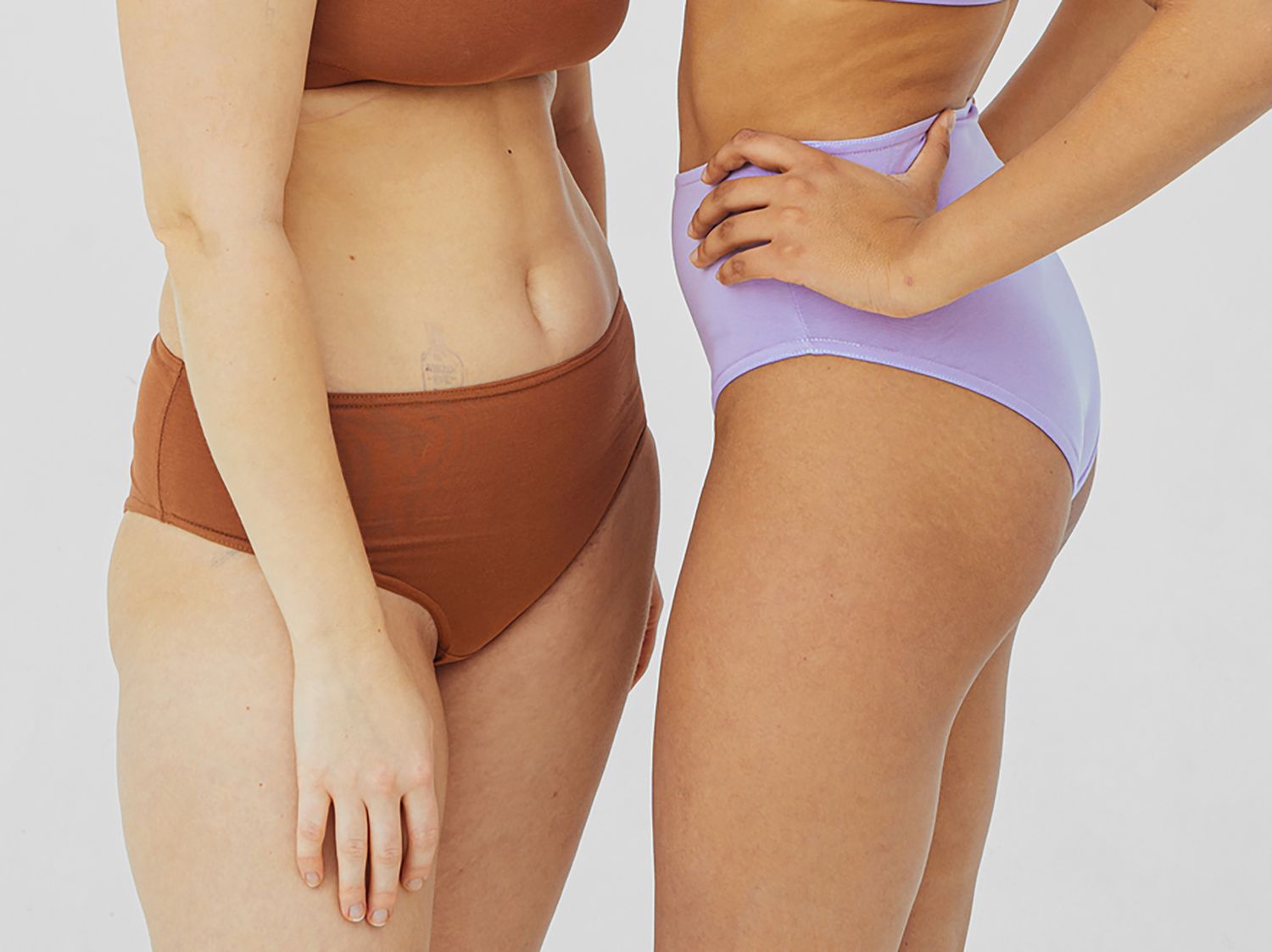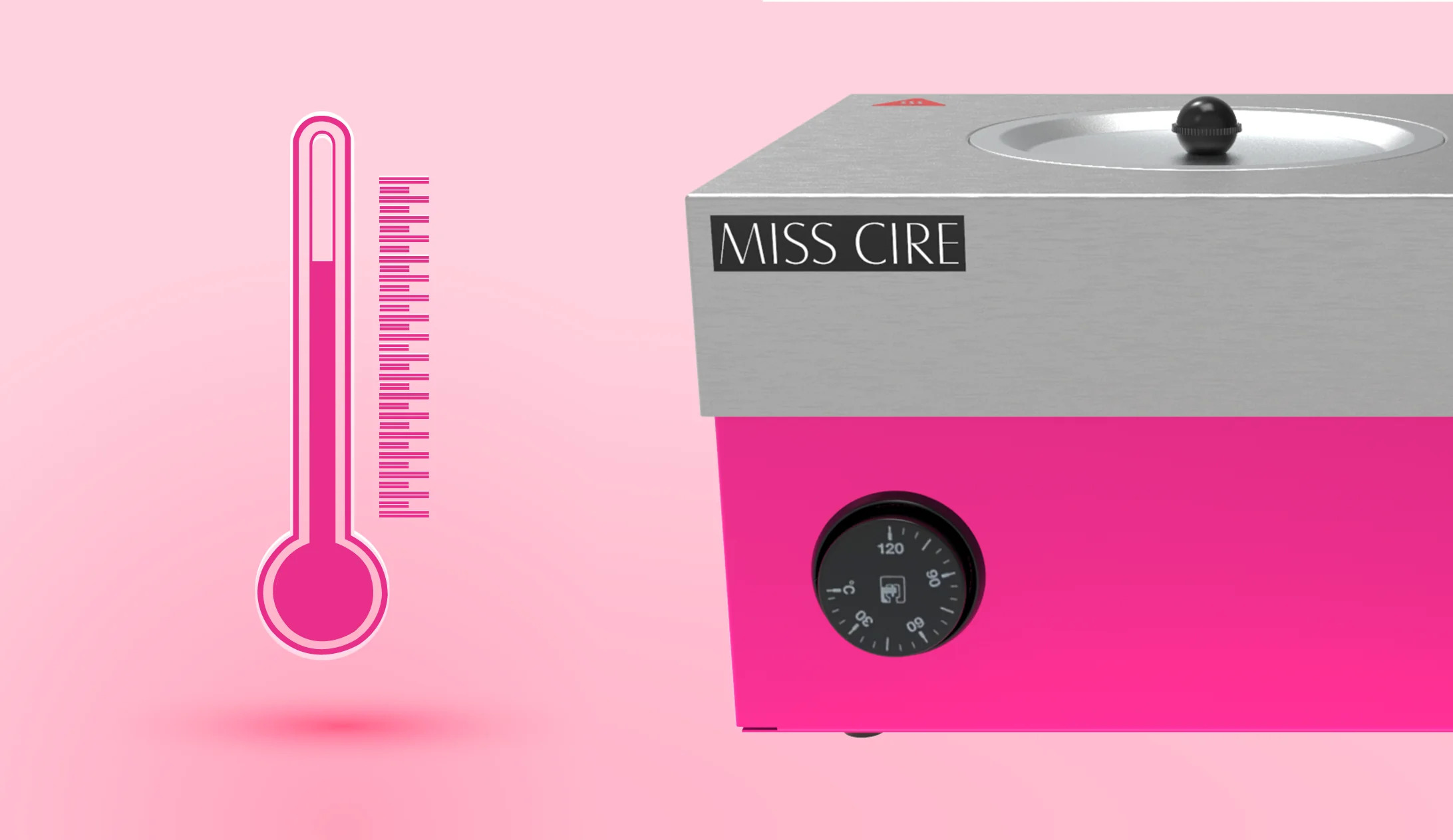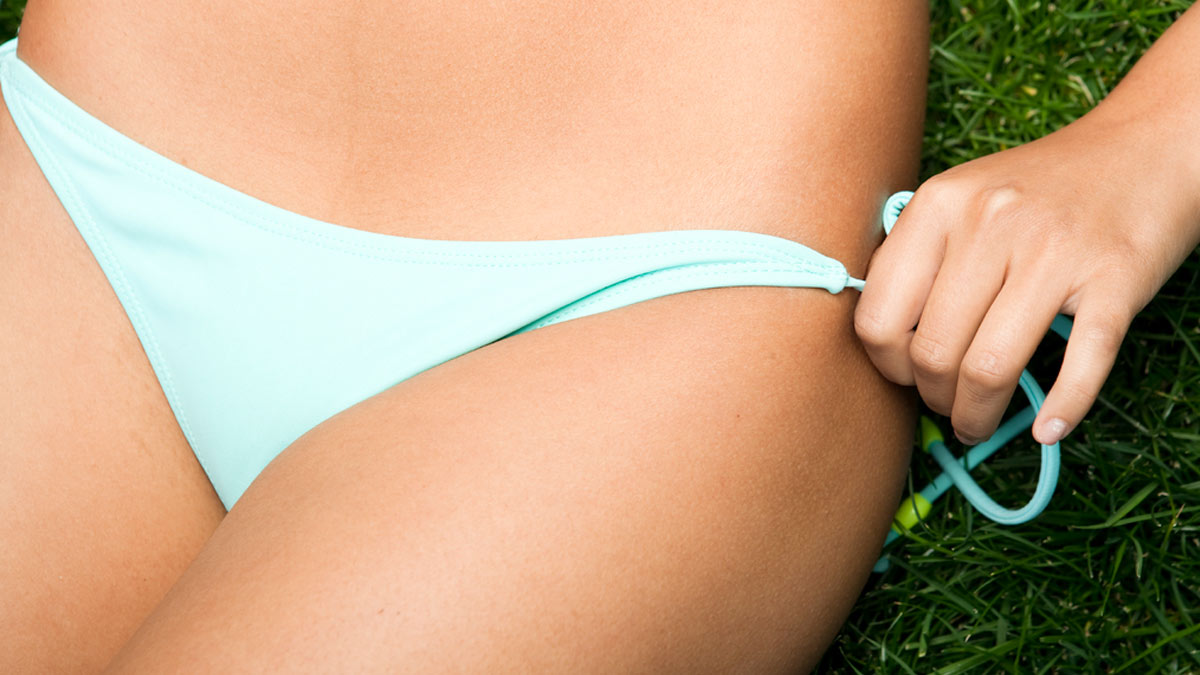Home>Women's Underwear>Bikinis>What Is A Bikini Wax
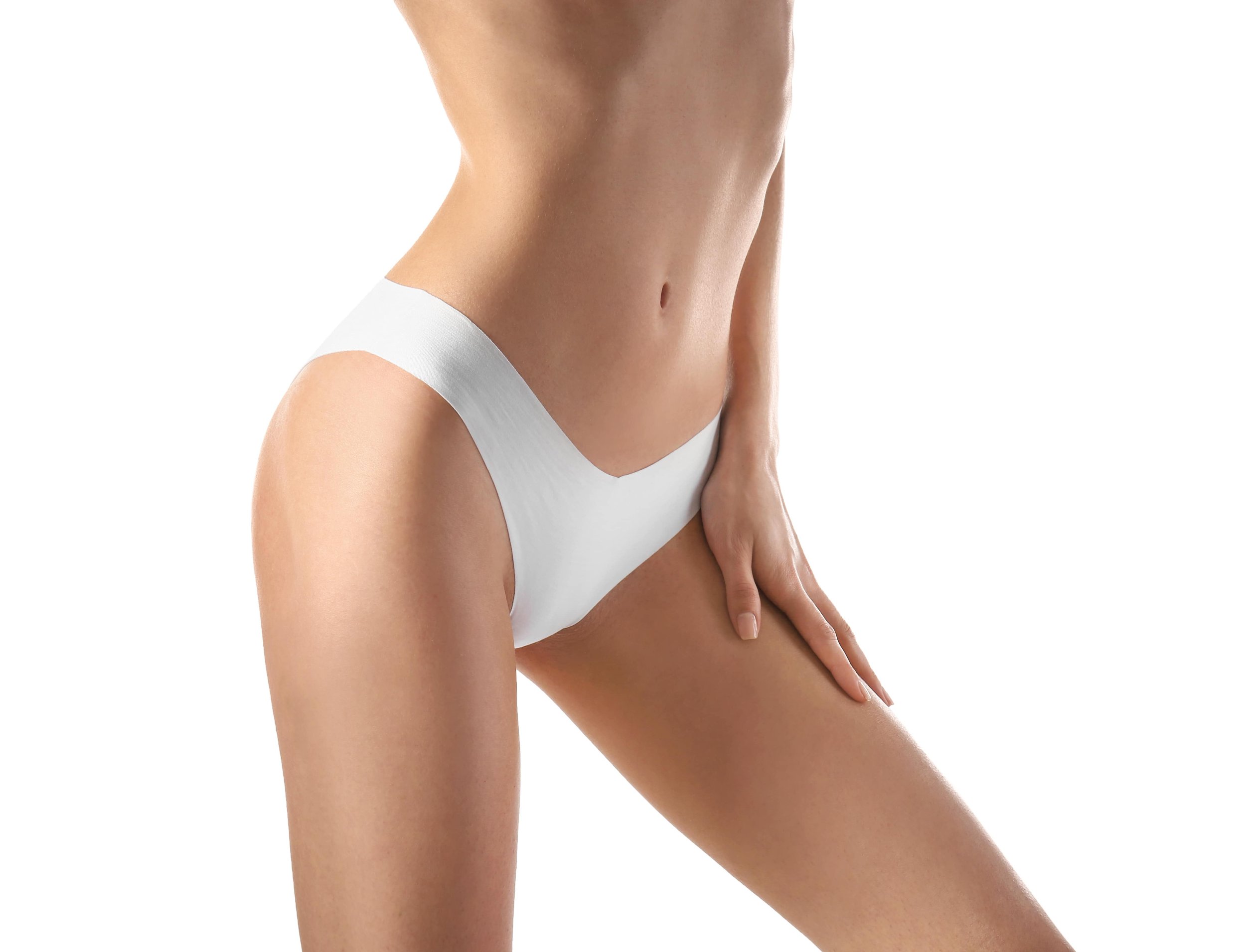

Bikinis
What Is A Bikini Wax
Modified: September 23, 2023
Learn all about bikini waxes and how they help you achieve a smooth and hair-free bikini area. Find out the benefits, process, and tips for a comfortable experience.
(Many of the links in this article redirect to a specific reviewed product. Your purchase of these products through affiliate links helps to generate commission for Under-tec.com, at no extra cost. Learn more)
Table of Contents
Introduction
Welcome to the world of bikini waxing, where smooth and hair-free skin meets confidence and self-assurance. Bikini waxing has become a popular method of hair removal for both men and women, offering a longer-lasting and more precise result compared to shaving or trimming. Whether you’re preparing for a beach vacation, special occasion, or simply enjoy the feeling of silky smooth skin, a bikini wax can be a game-changer.
But what exactly is a bikini wax? In simple terms, it involves the removal of hair from the bikini area using warm wax. The wax is applied to the desired area, a cloth strip is pressed onto the wax, and then swiftly pulled off, taking the hair with it. The result? A clean and hair-free bikini line.
While the concept of bikini waxing may seem straightforward, there are several types of bikini waxes to choose from, each offering a different level of hair removal. From the modest bikini line wax to the more daring Brazilian wax, there’s an option to suit everyone’s preferences.
If you’re considering getting a bikini wax, it’s important to know how to prepare for the procedure. Taking a few simple steps beforehand can help ensure a smoother and more comfortable experience. Additionally, understanding the process and what to expect can alleviate any potential concerns or anxiety you may have.
In this comprehensive guide, we’ll dive deep into the world of bikini waxing. We’ll explore the different types of bikini waxes, provide tips for preparation and aftercare, discuss potential side effects and risks, and address frequently asked questions. By the end, you’ll be armed with all the information you need to confidently embark on your bikini waxing journey.
Understanding Bikini Waxing
Bikini waxing is a method of hair removal that focuses on the bikini area, which includes the pubic region and the surrounding skin. It involves using warm wax to remove unwanted hair, leaving the area smooth and hair-free for an extended period of time. This technique has gained popularity due to its effectiveness and longer-lasting results compared to shaving or using depilatory creams.
The process of bikini waxing involves applying warm wax to the desired area in the direction of hair growth. A cloth strip is then placed over the wax and pressed firmly, allowing the wax to adhere to both the hair and the cloth. The wax is then quickly pulled off in the opposite direction of hair growth, removing the hair from the root.
One of the main advantages of bikini waxing is that it provides a smoother finish that lasts longer than other hair removal methods. Unlike shaving, where hair grows back within a few days, a properly done bikini wax can keep the area hair-free for up to three to four weeks. This makes it an ideal choice for those who want to maintain a clean and groomed bikini line without the hassle of frequent maintenance.
Another advantage of bikini waxing is that it leads to hair regrowth that is finer and softer. Over time, regular waxing can weaken the hair follicles, resulting in hair that is thinner and easier to remove. This can lead to a reduction in hair growth and finer regrowth, making each subsequent waxing session easier and more comfortable.
While bikini waxing can be an effective and convenient hair removal method, it’s important to note that it may cause some discomfort, especially for those who are new to waxing. The sensation of wax being applied and removed can be slightly uncomfortable, but it is usually quick and temporary. Additionally, some people may experience mild redness or irritation in the waxed area, which typically subsides within a few hours.
Certain factors may affect the outcome and comfort level of a bikini wax, including the skill and experience of the esthetician, the type of wax used, and the individual’s pain tolerance. It’s always a good idea to communicate your preferences and concerns with your esthetician to ensure a positive and satisfactory experience.
Different Types of Bikini Waxes
When it comes to bikini waxes, there are various options to choose from, depending on your desired level of hair removal and comfort level. Here are the most common types of bikini waxes:
- Bikini Line Wax: This is the most basic type of bikini wax, where hair is removed from the sides and top of the bikini area to create a tidy and well-groomed look. It focuses on removing hair that would be visible outside of your bikini or underwear.
- Full Bikini Wax: A full bikini wax (also known as a standard bikini wax) involves removing hair from the sides, top, and around the back of the bikini area. This type of waxing provides a more thorough hair removal compared to the bikini line wax.
- French Bikini Wax: A French bikini wax, also known as a modified bikini wax, involves removing hair from the sides and top of the bikini area like a bikini line wax, but with a narrower strip left in the front. It offers a partially bare look while still leaving some hair in the front.
- Brazilian Bikini Wax: The Brazilian bikini wax is one of the most popular and daring types of bikini waxes. It involves complete hair removal from the front, back, and everything in between. This style leaves the entire bikini area fully bare. It is known for its smooth and clean finish.
- Hollywood Bikini Wax: The Hollywood bikini wax is similar to the Brazilian wax in terms of complete hair removal from the front, back, and everything in between. The only difference is that with a Hollywood wax, all of the hair is removed, including the hair on the buttocks.
It’s essential to communicate your desired style and level of hair removal with your esthetician beforehand. They will be able to recommend the best type of bikini wax based on your preferences and guide you through the process.
Keep in mind that the pain level and discomfort of each type of bikini wax may vary. Generally, the more hair that is removed, the more sensation you may experience during the waxing process. However, with proper preparation and communication, your esthetician can help minimize any discomfort and ensure a positive waxing experience.
How to Prepare for a Bikini Wax
Preparing for a bikini wax is essential to ensure a smooth and comfortable experience. By following these simple steps, you can help minimize any discomfort and achieve the best results:
- Grow out your hair: Before your bikini wax appointment, allow your hair to grow out to a length of at least 1/4 inch or 6mm. This allows the wax to adhere properly, resulting in more effective hair removal.
- Exfoliate the area: Gently exfoliate the bikini area a day or two before your appointment. This helps remove dead skin cells and allows for better wax adhesion, resulting in a smoother waxing experience.
- Trim longer hairs: If your hair is excessively long, consider trimming it to the recommended length before your appointment. This can help reduce any pulling or discomfort during the waxing process.
- Take a shower: It’s a good idea to take a shower before your appointment to ensure you are clean and fresh. Avoid applying any creams, lotions, or oils to the bikini area, as they can interfere with the waxing process.
- Avoid sun exposure and tanning: It’s best to avoid sun exposure and tanning beds for at least 24 hours before your bikini wax. Sunburned or tanned skin can be more sensitive, increasing the likelihood of discomfort during the waxing process.
- Avoid caffeine and alcohol: Limit your consumption of caffeine and alcohol before your appointment, as they can make your skin more sensitive and increase discomfort during the waxing process.
- Wear loose clothing: Choose loose, comfortable clothing to wear to your appointment. Tight-fitting clothing can irritate the freshly waxed area, so opt for breathable fabrics that won’t rub against the skin.
- Communicate with your esthetician: Before the waxing process begins, communicate your preferences and any concerns you may have to your esthetician. They can provide guidance and ensure that you are comfortable throughout the process.
By following these preparation tips, you can help create an optimal environment for a successful bikini wax. Remember, everyone’s experience and pain tolerance may vary, so it’s important to communicate openly and honestly with your esthetician to achieve the best results.
The Bikini Waxing Process
The bikini waxing process involves several steps that are followed by a skilled esthetician to ensure effective hair removal and a comfortable experience. Here’s what you can expect during your bikini waxing session:
- Cleanse the area: Your esthetician will clean the bikini area with a gentle antiseptic solution to remove any dirt, oil, or bacteria. This step ensures a hygienic environment for the waxing process.
- Apply warm wax: Next, your esthetician will heat the wax to a comfortable temperature and apply it to the desired area using a wooden spatula or roller. The warm wax helps to open the hair follicles, allowing for easier hair removal from the root.
- Place the cloth strip: A cloth strip is firmly pressed onto the wax, ensuring it adheres to both the hair and the wax. The esthetician will smooth it down, following the direction of hair growth, to ensure proper adhesion and effective hair removal.
- Swiftly remove the strip: Once the wax has cooled and adhered to the hair, the esthetician will quickly pull off the cloth strip in the opposite direction of hair growth. This swift motion, done with confidence, helps minimize discomfort and ensures efficient hair removal.
- Repeat the process: The waxing process is repeated in small sections until the desired hair removal is achieved. Your esthetician will work in a systematic manner, ensuring they cover the entire bikini area with precision and care.
- Remove any residual wax: After all the hair has been removed, any residual wax is gently removed using a soothing post-waxing oil or lotion. This helps to calm and nourish the skin, reducing any potential irritation.
Throughout the process, your esthetician will take care to ensure your comfort and satisfaction. They will communicate with you, asking about your pain tolerance and adjusting their technique accordingly. Remember, it is normal to experience some discomfort or slight redness immediately after the waxing process, but this should subside within a few hours.
It is crucial to choose a reputable spa or salon with experienced estheticians who follow proper hygiene practices and use high-quality waxing products. By doing so, you can have peace of mind knowing that you are in capable hands and will receive a professional bikini waxing experience.
Tips for a Successful Bikini Wax
Getting a bikini wax can be a positive and rewarding experience when approached with proper preparation and care. Here are some tips to ensure a successful bikini wax:
- Communicate your preferences: Before your waxing session begins, communicate your desired style and level of hair removal to your esthetician. They can provide guidance and tailor the waxing process to meet your expectations.
- Breathe and relax: Deep breathing and consciously relaxing your muscles during the waxing process can help reduce discomfort and make the experience more manageable.
- Take pain relievers if needed: If you have a low pain tolerance or are particularly sensitive to waxing, consider taking a mild pain reliever, such as ibuprofen, about 30 minutes before your appointment. This can help minimize any discomfort during the waxing process.
- Avoid scheduling during your period: Some individuals may find that they are more sensitive to pain during their menstrual cycle. If you experience heightened sensitivity during this time, it may be best to avoid scheduling your bikini wax during your period.
- Maintain proper hygiene: To prevent any potential infection or irritation, avoid touching the freshly waxed area with unwashed hands and keep the area clean and dry following the waxing session.
- Avoid heat and friction: For the first 24 to 48 hours after your bikini wax, avoid hot showers, saunas, steam rooms, and excessive sweating. Friction from tight clothing or activities such as cycling or vigorous exercise should also be avoided to minimize irritation.
- Moisturize the area: After 48 hours, it’s recommended to moisturize the bikini area with a gentle, unscented lotion to keep the skin hydrated and nourished.
- Exfoliate between waxing sessions: Regular exfoliation, about two to three times a week, helps prevent ingrown hairs by removing dead skin cells. Use a gentle exfoliating scrub or brush to keep the bikini area smooth.
- Maintain consistent waxing appointments: To achieve optimal results, it’s best to schedule regular waxing appointments every three to four weeks. This helps train the hair follicles, reduces hair regrowth, and leads to a smoother and more comfortable experience over time.
By following these tips, you can help ensure a successful bikini waxing experience. Remember, everyone’s pain tolerance and experience may vary, so it’s important to listen to your body, communicate with your esthetician, and take care of your skin before and after each waxing session.
Aftercare for Your Bikini Wax
Proper aftercare is crucial for maintaining the results of your bikini wax and keeping your skin healthy and comfortable. Here are some essential tips for post-waxing care:
- Avoid touching the area: After your bikini wax, avoid touching or scratching the waxed area to prevent any potential infection or irritation. Touching can introduce bacteria and worsen the sensitivity of the freshly waxed skin.
- Avoid heat and friction: For the first 24 to 48 hours following your bikini wax, avoid exposing the waxed area to hot showers, saunas, steam rooms, or excessive sweating. Also, steer clear of tight clothing and activities that may cause friction, such as cycling or vigorous exercise.
- Avoid sun exposure and tanning: Protect your waxed bikini area from the sun and tanning beds for at least 24 hours. Newly waxed skin is more susceptible to sunburn and hyperpigmentation.
- Avoid harsh products and exfoliation: Steer clear of harsh products, such as fragranced lotions, scrubs, or chemical exfoliants, for 48 hours after your wax. These can irritate the skin. After 48 hours, you can resume gentle exfoliation to prevent ingrown hairs.
- Moisturize the area: After 48 hours, moisturize the bikini area daily with a gentle, unscented moisturizer. This helps keep the skin hydrated, prevents dryness, and soothes any potential irritation.
- Avoid sexual activity: It’s best to refrain from sexual activity for at least 24 to 48 hours after your bikini wax. The waxed area may be more sensitive, and sexual activity can introduce bacteria and potentially irritate the skin.
- Avoid swimming: Wait at least 24 to 48 hours before going for a swim in pools, hot tubs, or natural bodies of water after your bikini wax. The chlorine or bacteria in pools and the natural elements in natural water bodies can irritate the freshly waxed skin.
- Stay consistent with your waxing schedule: For optimal results, maintain a consistent waxing schedule. Most individuals will need to schedule a new bikini wax every three to four weeks to keep the area smooth and hair-free.
- Watch for any potential side effects: Monitor the waxed area for any signs of redness, inflammation, or infection. If you notice any unusual or concerning symptoms, consult with your esthetician or a healthcare professional.
By following these aftercare tips, you can ensure a comfortable healing process and maintain the results of your bikini wax. If you have any specific concerns or questions, don’t hesitate to reach out to your esthetician for personalized advice and guidance.
Potential Side Effects and Risks of Bikini Waxing
While bikini waxing is generally safe and well-tolerated, it’s important to be aware of potential side effects and risks that may arise. Here are some possible issues to consider:
- Skin irritation: Following a bikini wax, it’s common to experience some level of redness, soreness, or mild irritation in the waxed area. This is typically temporary and should subside within a few hours or days. Applying a soothing post-waxing lotion can help alleviate any discomfort.
- Ingrown hairs: Ingrown hairs occur when new hair growth gets trapped beneath the skin’s surface, leading to small bumps or inflammation. They can be more common in individuals with curly or coarse hair. Regular exfoliation between waxing sessions can help prevent ingrown hairs, while gentle exfoliation and proper aftercare can aid in their treatment.
- Post-inflammatory hyperpigmentation: In some cases, individuals with darker skin tones may experience temporary darkening of the skin (hyperpigmentation) in the waxed area. This can be a result of inflammation or irritation. Applying post-waxing products specifically formulated for hyperpigmentation can help fade discoloration.
- Bacterial infection: Although rare, there is a small risk of developing a bacterial infection after a bikini wax. To minimize this risk, it’s important to choose a reputable salon or spa that maintains strict hygiene practices and uses clean and sterilized equipment. Additionally, avoid touching the waxed area with unwashed hands and follow proper aftercare instructions to keep the area clean and bacteria-free.
- Allergic reactions: Some individuals may have sensitivity or allergies to the ingredients in wax or post-waxing products. It’s essential to inform your esthetician of any known allergies or sensitivities beforehand. They can perform a patch test or recommend alternative products to minimize the risk of an allergic reaction.
- Pre-existing skin conditions: If you have pre-existing skin conditions, such as eczema, psoriasis, or dermatitis, it’s advisable to consult with your dermatologist before getting a bikini wax. These conditions can make the skin more sensitive and prone to irritation, so extra precautions or alternative hair removal methods may be recommended.
While these side effects and risks may occur, they are usually minor and can be minimized with proper preparation, communication with your esthetician, and following aftercare guidelines. If you experience any severe or persistent symptoms or have any concerns, it’s best to consult with your esthetician or a healthcare professional for further evaluation and guidance.
Frequently Asked Questions about Bikini Waxing
Here are some common questions that people often have about bikini waxing:
- Does bikini waxing hurt?
The level of discomfort experienced during a bikini wax can vary depending on individual pain tolerance and the area being waxed. While it may cause some temporary discomfort, many find that the results outweigh the mild pain. Communicating with your esthetician and practicing deep breathing techniques can help minimize any discomfort. - How long should my hair be before getting a bikini wax?
To ensure effective hair removal, it’s recommended to have at least 1/4 inch or 6mm of hair growth before getting a bikini wax. This allows the wax to adhere properly to the hair for optimal results. - How long do the results of a bikini wax last?
The results of a bikini wax can last anywhere from three to four weeks. However, hair growth patterns and individual factors may affect the duration. Regular waxing can lead to finer regrowth and a longer-lasting smoothness. - How can I prevent ingrown hairs after a bikini wax?
To prevent ingrown hairs, exfoliate the bikini area two to three times a week using a gentle scrub or brush. This helps remove dead skin cells and allows new hair to grow without obstruction. Applying a post-waxing product specifically designed to prevent ingrown hairs can also be beneficial. - Can I get a bikini wax while on my period?
While it is possible to get a bikini wax while on your period, some individuals may be more sensitive to pain during this time. If you feel more discomfort during your period, it might be best to schedule your bikini wax at a different time to ensure a more comfortable experience. - Can I go swimming after a bikini wax?
It is recommended to wait for at least 24 to 48 hours before swimming in pools, hot tubs, or natural bodies of water after a bikini wax. The freshly waxed skin is more susceptible to irritation and infection during this time. - Can I sunbathe or tan after a bikini wax?
It is best to avoid sun exposure and tanning beds for at least 24 hours after a bikini wax. The waxed skin may be more sensitive and prone to sunburn or hyperpigmentation. - Can I get a bikini wax if I have sensitive skin?
Yes, individuals with sensitive skin can still get a bikini wax. It’s important to communicate your concerns and any known allergies or sensitivities to your esthetician before the waxing session. They can recommend suitable products and adjust their technique to minimize any potential discomfort or irritation.
If you have any specific questions or concerns about bikini waxing, it’s always a good idea to consult with your esthetician or a skincare professional. They can provide personalized advice and address any individual concerns you may have.
Conclusion
Bikini waxing is a popular and effective method of hair removal that can provide a smooth and confident feeling. Understanding the different types of bikini waxes, preparing properly, and following the recommended aftercare are key to a successful and comfortable waxing experience.
By choosing the right type of bikini wax for your preferences, communicating openly with your esthetician, and practicing self-care before and after your waxing session, you can achieve optimal results and maintain smooth, hair-free skin for several weeks.
While minor side effects like redness, temporary discomfort, and the possibility of ingrown hairs are common, these can typically be minimized and managed with appropriate aftercare and communication with your esthetician.
Remember, consistency is key when it comes to achieving long-term results from bikini waxing. Maintaining a regular waxing schedule and practicing good skincare habits between sessions can help reduce hair regrowth, improve the texture and quality of regrown hair, and prevent ingrown hairs.
If you have any specific concerns or questions about bikini waxing, don’t hesitate to reach out to your esthetician or a skincare professional. They can provide personalized advice and recommendations based on your unique needs and preferences.
With the knowledge and tips shared in this comprehensive guide, you are well-equipped to embark on your bikini waxing journey. Enjoy the confidence and freedom that comes with having a beautifully groomed bikini area!



